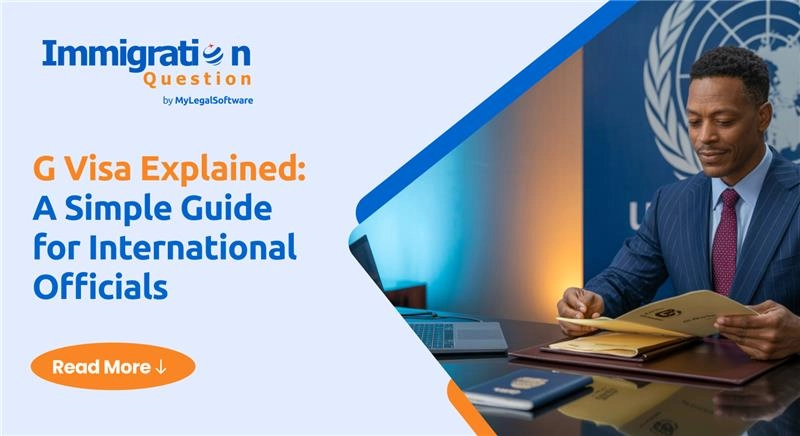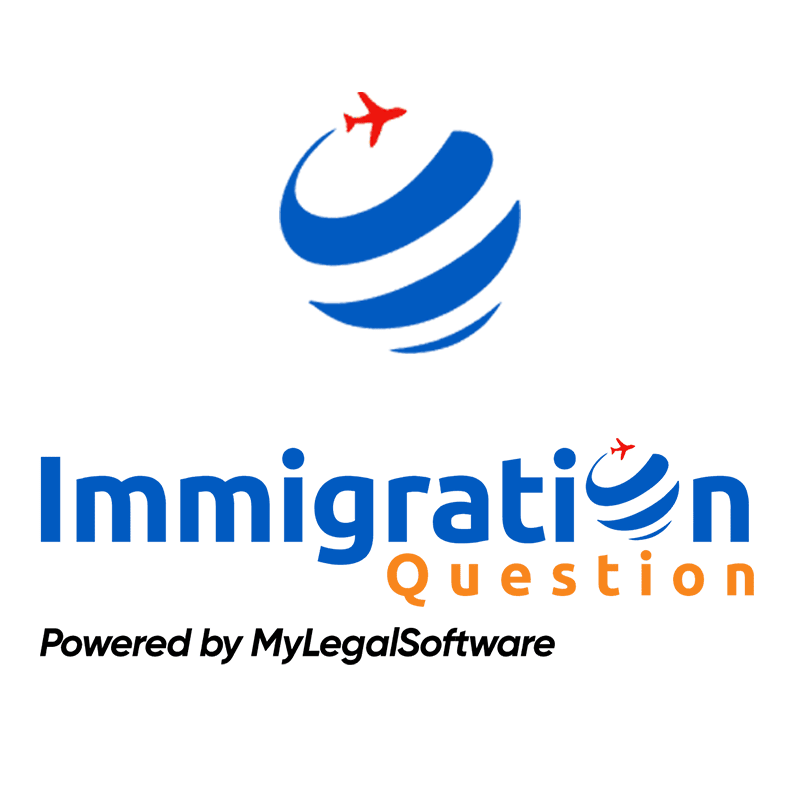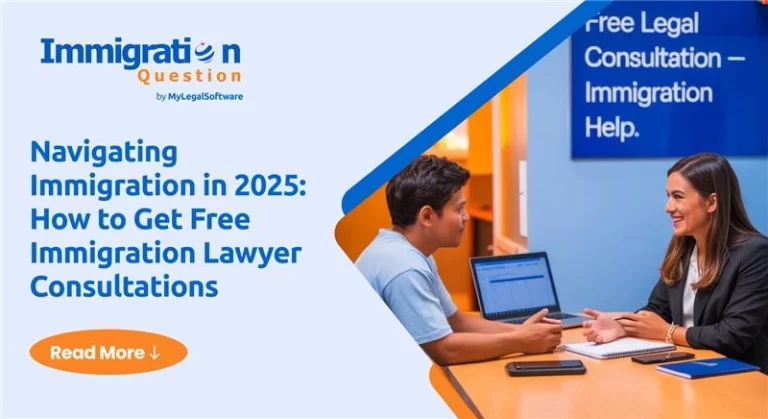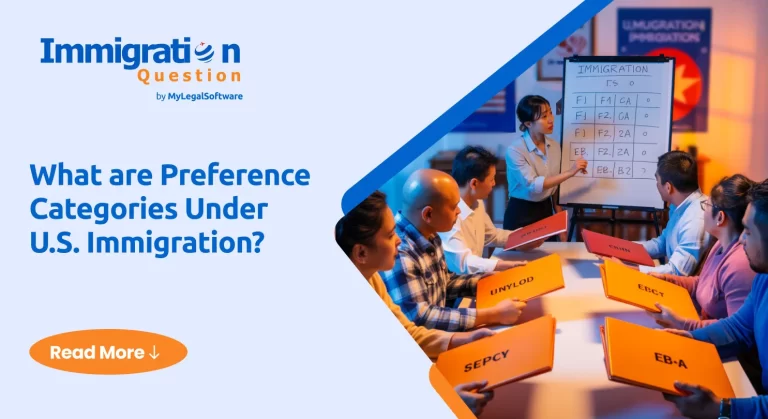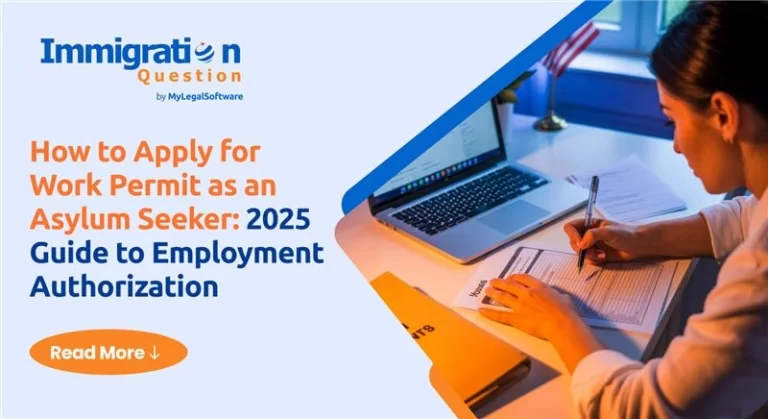If you’re planning to come to the United States in an official government or diplomatic role, you’ll likely need a G visa—one of several non-immigrant visa options that allow foreign officials and employees of international organizations to lawfully enter the U.S.
Understanding the visa process can feel overwhelming, but we’re here to simplify it. Whether you’re a diplomat, a government representative, or an employee of an international organization like the United Nations, this guide will walk you through what a G visa is, who qualifies, how to apply, and what to expect along the way.
Understanding U.S. Visa Categories: Immigrant vs. Non-Immigrant
Anyone who lives in a foreign country but wishes to spend time in the United States must first obtain a visa. U.S. visas typically fall into two main categories: immigrant visas and non-immigrant visas.
- Immigrant visas are for people who plan to move permanently to the U.S.
- Non-immigrant visas, on the other hand, are for those who want to visit the U.S. temporarily for a specific reason—such as tourism, business, or, in the case of G visas, official government or international work.
One of the more commonly used non-immigrant visa types for foreign diplomats and international officials is the G visa.
What Is a G Visa?
A G visa is issued to diplomats, government officials, and employees of international organizations who are traveling to the U.S. to carry out official duties. These visas also cover immediate family members, allowing them to lawfully reside in the U.S. during the official’s assignment.
There are several subcategories of the G visa, each designed for a slightly different purpose:
- G-1 Visa: For members of a permanent mission representing a recognized foreign government at an international organization.
- G-2 Visa: For government officials temporarily visiting the U.S. to attend meetings at international organizations.
- G-3 Visa: For officials from non-recognized governments or those not members of the relevant organization.
- G-4 Visa: For individuals appointed to work at international organizations such as the United Nations.
- G-5 Visa: For personal employees or domestic workers of G-1 through G-4 visa holders.
These visas are typically issued for the “duration of stay”—meaning you and your eligible family members can remain in the U.S. as long as you’re performing your official duties and are recognized by the U.S. government. There’s generally no need to apply for an extension if your official assignment continues.
Who Qualifies for a G Visa?
To qualify for a G visa, you must meet a few basic conditions:
- You’re entering the U.S. to perform official duties on behalf of your government or an international organization.
- You’re recognized by the U.S. Department of State as eligible for a G visa.
- You have the required documentation, including a diplomatic note or letter confirming your status and purpose of travel.
Who Counts as an Immediate Family Member?
Family members who qualify may also be eligible for their own G visas, allowing them to stay in the U.S. legally for the length of the principal visa holder’s assignment. It’s important that these individuals primarily reside in the same household and do not maintain a separate residence.
Limitations of a G Visa
While G visas serve a critical purpose for diplomatic and international organization work, there are some key limitations to keep in mind:
1. Heads of State or Government
If you are a head of state or government, a G visa is not the correct option—even for official visits. Instead, you are required to apply for an A-1 diplomatic visa, regardless of the nature or duration of your stay.
2. Purpose of Visit
G visas are intended strictly for official duties related to recognized international organizations. If you’re planning to visit the U.S. for recreational, commercial, or unrelated business purposes, you’ll need to apply for a different visa—such as a B-1/B-2 visa for business or tourism.
3. Organization Approval
The international organization you work for must be officially recognized by the U.S. government. If the organization has not received this designation, G visas for its employees will not be approved.
How to Apply for a G Visa?
Getting a G visa involves submitting the right documentation and following a few essential steps. Here’s an overview of what the process typically looks like:
1. Complete the Nonimmigrant Visa Application (Form DS-160)
All applicants must fill out Form DS-160 online and submit it electronically.
2. Gather Required Documents
You’ll need:
- A valid passport from your home country
- A recent photo that meets U.S. visa requirements
- A diplomatic note (or official letter) from your government or international organization confirming your position, purpose of travel, and length of assignment
3. Apply for Family Members
If your spouse, children, or eligible family members are traveling with you, be sure to complete the required forms and documentation for each of them.
4. Check Fee Waivers
Most G visa applicants are exempt from paying visa fees, but confirm this with your sponsoring organization or embassy.
5. Schedule a Visa Interview (if required)
Depending on your country and situation, you may be required to attend an interview at a U.S. embassy or consulate. For many G visa applicants, especially those applying through official government channels, this requirement may be waived.
Can You Be Denied a G Visa?
Yes, although G visas are often granted to qualifying individuals, they are not guaranteed. The U.S. Department of State has the discretion to approve or deny visa applications based on eligibility, documentation, and other factors.
Also, even if your G visa is approved, final admission into the United States is determined by a Customs and Border Protection (CBP) officer upon arrival. That’s why it’s essential to have all your paperwork in order, and, if needed, consult an immigration attorney for guidance.
Need Help with Your G Visa Application?
Navigating the G visa process can be complicated, especially when it involves multiple forms, government approvals, and family members. A skilled immigration attorney can help make sure your application is complete and accurate—and give you the best chance of a smooth entry into the U.S.
Whether you’re representing your government or starting a new position at an international organization, understanding how G visas work is the first step toward a successful assignment in the U.S.
If you’d like help with your G visa application or have questions about immigration options for diplomatic or official work, visit ImmigrationQuestion.com. We connect foreign officials and their families with experienced immigration attorneys who can provide trusted guidance every step of the way.
Want to know what happens if you don’t marry within 90 days on a K-1 fiancée visa? Go here.
Frequently Asked Questions
1. Who is eligible for a G visa?
Diplomats, government officials, and employees of international organizations like the UN, along with their eligible family members.
2. Can a G visa holder apply for a green card?
Yes, in some cases. G-4 visa holders may apply for a green card under specific conditions.
3. Do G visa holders pay U.S. taxes?
No, income from official duties is tax-exempt. Other income may be taxable.
4. Can family members of G visa holders work in the U.S.?
Yes, spouses and certain children can apply for work authorization.
5. How long can you stay in the U.S. on a G visa?
As long as you’re officially working with a recognized international organization or government. There’s no set time limit.

